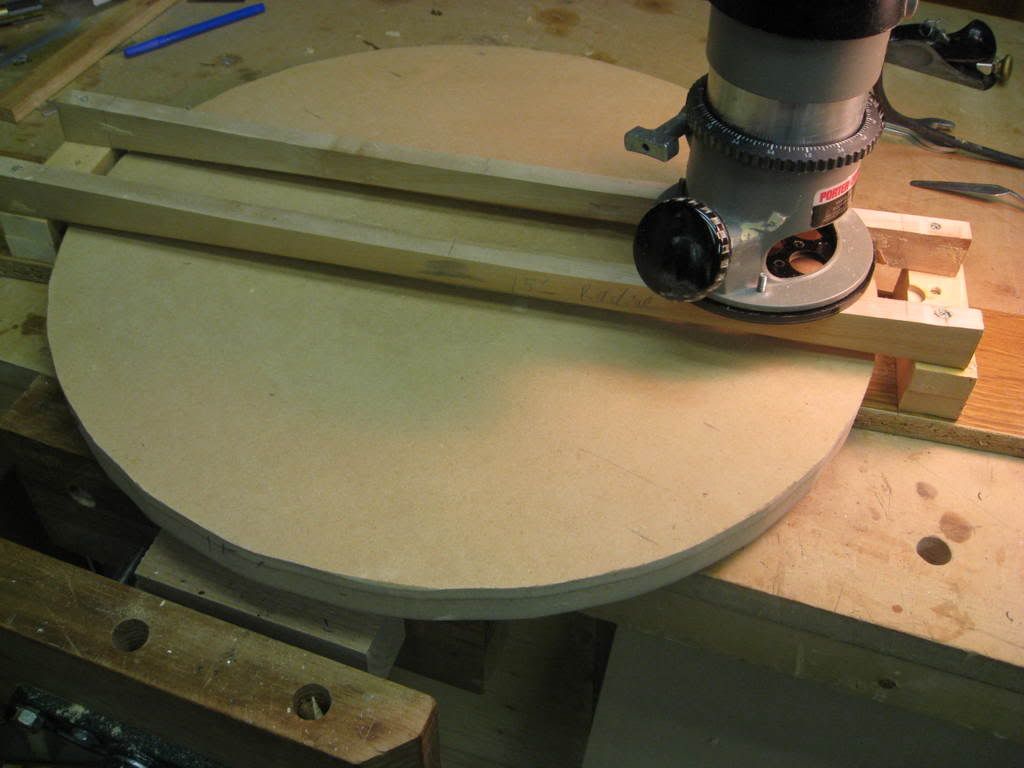Here's the neck blank after I planed it. You almost can't even see the glue lines.
I ordered a couple of rosettes from DukeLuthier.com. The seem pretty high quality and the price was very reasonable.
My thoughts on woodworking, project plans, tools, reviews, and links

| Length | D (inches) | D (16ths) | D (32nds) | D (64ths) |
| 1 | 0.000 | 0 | 0 | 0 |
| 2 | 0.001 | 0 | 0 | 0 |
| 3 | 0.002 | 0 | 0 | 0 |
| 4 | 0.004 | 0 | 0 | 0 |
| 5 | 0.007 | 0 | 0 | 0 |
| 6 | 0.009 | 0 | 0 | 1 |
| 7 | 0.013 | 0 | 0 | 1 |
| 8 | 0.017 | 0 | 1 | 1 |
| 9 | 0.021 | 0 | 1 | 1 |
| 10 | 0.026 | 0 | 1 | 2 |
| 11 | 0.032 | 1 | 1 | 2 |
| 12 | 0.038 | 1 | 1 | 2 |
| 13 | 0.044 | 1 | 1 | 3 |
| 14 | 0.051 | 1 | 2 | 3 |
| 15 | 0.059 | 1 | 2 | 4 |
| 16 | 0.067 | 1 | 2 | 4 |
| 17 | 0.075 | 1 | 2 | 5 |
| 18 | 0.084 | 1 | 3 | 5 |
| 19 | 0.094 | 2 | 3 | 6 |
| 20 | 0.104 | 2 | 3 | 7 |
| 21 | 0.115 | 2 | 4 | 7 |
| 22 | 0.126 | 2 | 4 | 8 |
| 23 | 0.138 | 2 | 4 | 9 |
| 24 | 0.150 | 2 | 5 | 10 |
| Length | D (decimal) | D (16ths) | D (32nds) | D (64ths) |
| 1 | 0.000 | 0 | 0 | 0 |
| 2 | 0.001 | 0 | 0 | 0 |
| 3 | 0.003 | 0 | 0 | 0 |
| 4 | 0.006 | 0 | 0 | 0 |
| 5 | 0.009 | 0 | 0 | 1 |
| 6 | 0.013 | 0 | 0 | 1 |
| 7 | 0.018 | 0 | 1 | 1 |
| 8 | 0.024 | 0 | 1 | 2 |
| 9 | 0.030 | 0 | 1 | 2 |
| 10 | 0.037 | 1 | 1 | 2 |
| 11 | 0.045 | 1 | 1 | 3 |
| 12 | 0.054 | 1 | 2 | 3 |
| 13 | 0.063 | 1 | 2 | 4 |
| 14 | 0.073 | 1 | 2 | 5 |
| 15 | 0.084 | 1 | 3 | 5 |
| 16 | 0.095 | 2 | 3 | 6 |
| 17 | 0.108 | 2 | 3 | 7 |
| 18 | 0.121 | 2 | 4 | 8 |
| 19 | 0.134 | 2 | 4 | 9 |
| 20 | 0.149 | 2 | 5 | 10 |
| 21 | 0.164 | 3 | 5 | 11 |
| 22 | 0.180 | 3 | 6 | 12 |
| 23 | 0.197 | 3 | 6 | 13 |
| 24 | 0.214 | 3 | 7 | 14 |
| 25 | 0.233 | 4 | 7 | 15 |
| 26 | 0.252 | 4 | 8 | 16 |
| 27 | 0.271 | 4 | 9 | 17 |
| 28 | 0.292 | 5 | 9 | 19 |
| 29 | 0.313 | 5 | 10 | 20 |
| 30 | 0.335 | 5 | 11 | 21 |